Asian Rhinoplasty Before & After Photos
Asian Rhinoplasty Before & After Case 1

Asian Rhinoplasty Before and After Photo. Surgery performed in Dallas, TX at Law Plastic Surgery.
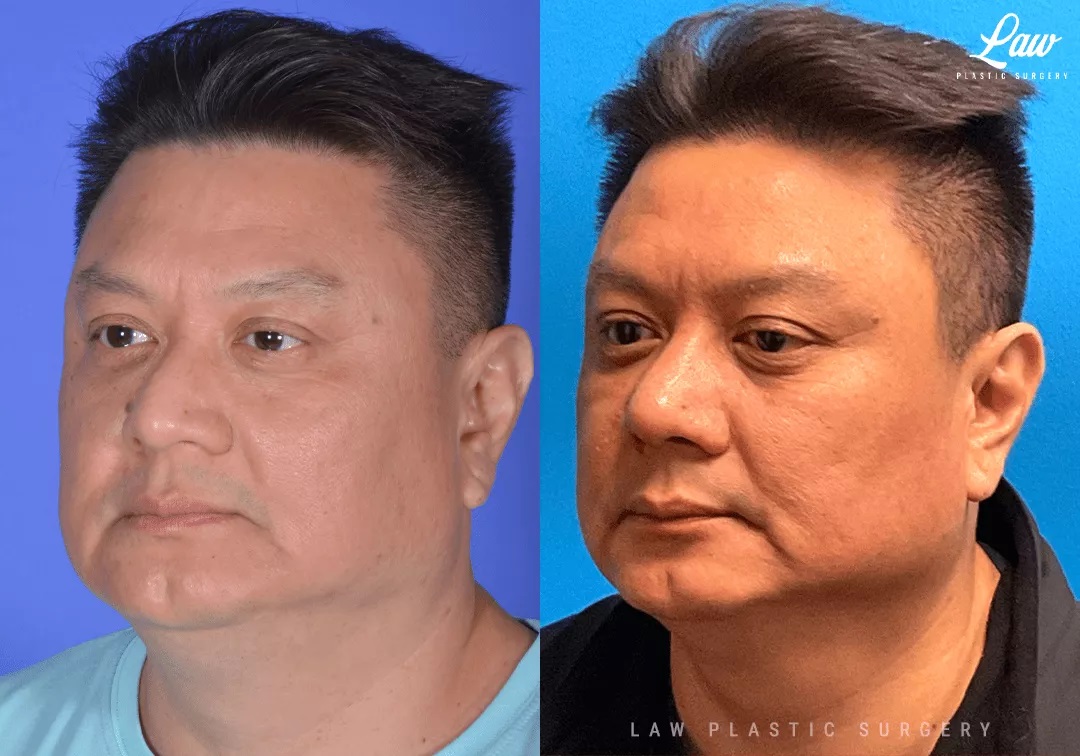
Asian Rhinoplasty Before and After Photo. Surgery performed in Dallas, TX at Law Plastic Surgery.

Asian Rhinoplasty Before and After Photo. Surgery performed in Dallas, TX at Law Plastic Surgery.
Septorhinoplasty is an effective way to improve breathing for somebody with a deviated septum and/or collapse of the internal nasal valve.
A good test for the internal nasal valve is to gently pull towards the side the skin of the nose, or try a nasal breathing strip. If breathing noticeably improves, then use of spreader grafts and tensioning of the cartilage in the area is likely to help.
A deviated septum is often visible by feel or touch, but occasionally a CT scan is helpful for the deeper parts of the septum that are not as easily seen.
Here, a small dorsal hump and drooping tip were also improved during the same procedure.
He is seen here at 1 month. Swelling will continue to improve over 9-12 months.
Asian Rhinoplasty Before & After Case 2

Asian Rhinoplasty Before and After Photo. Surgery performed in Dallas, TX at Law Plastic Surgery.
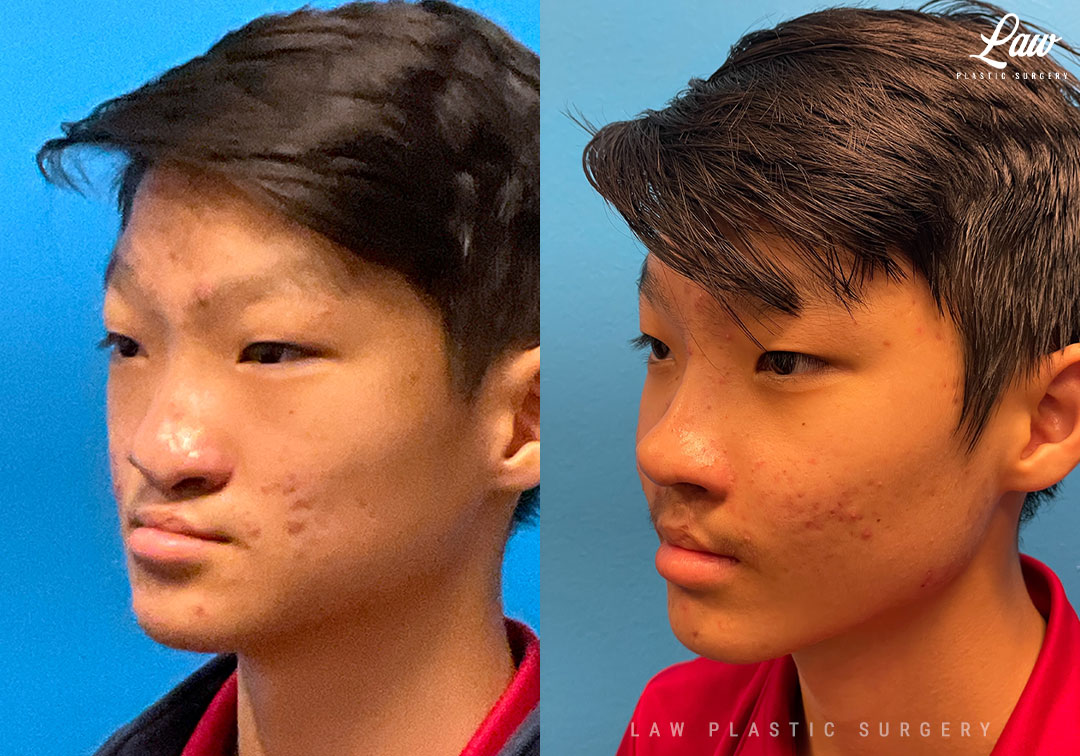
Asian Rhinoplasty Before and After Photo. Surgery performed in Dallas, TX at Law Plastic Surgery.

Asian Rhinoplasty Before and After Photo. Surgery performed in Dallas, TX at Law Plastic Surgery.

Asian Rhinoplasty Before and After Photo. Surgery performed in Dallas, TX at Law Plastic Surgery.
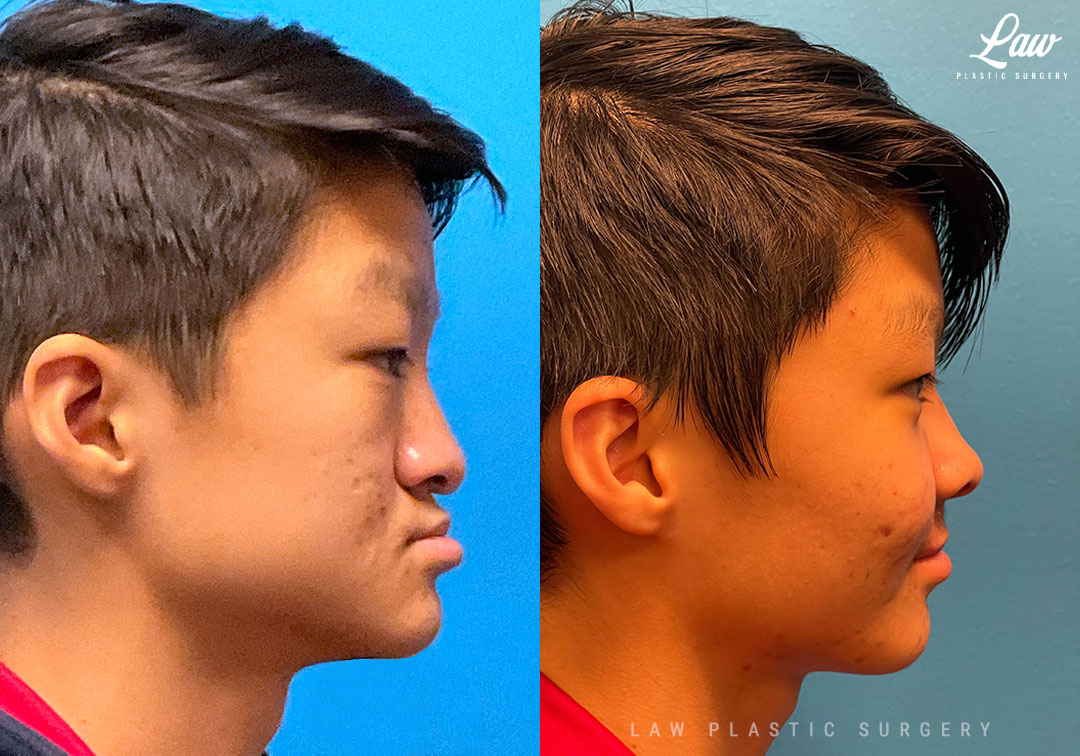
Asian Rhinoplasty Before and After Photo. Surgery performed in Dallas, TX at Law Plastic Surgery.
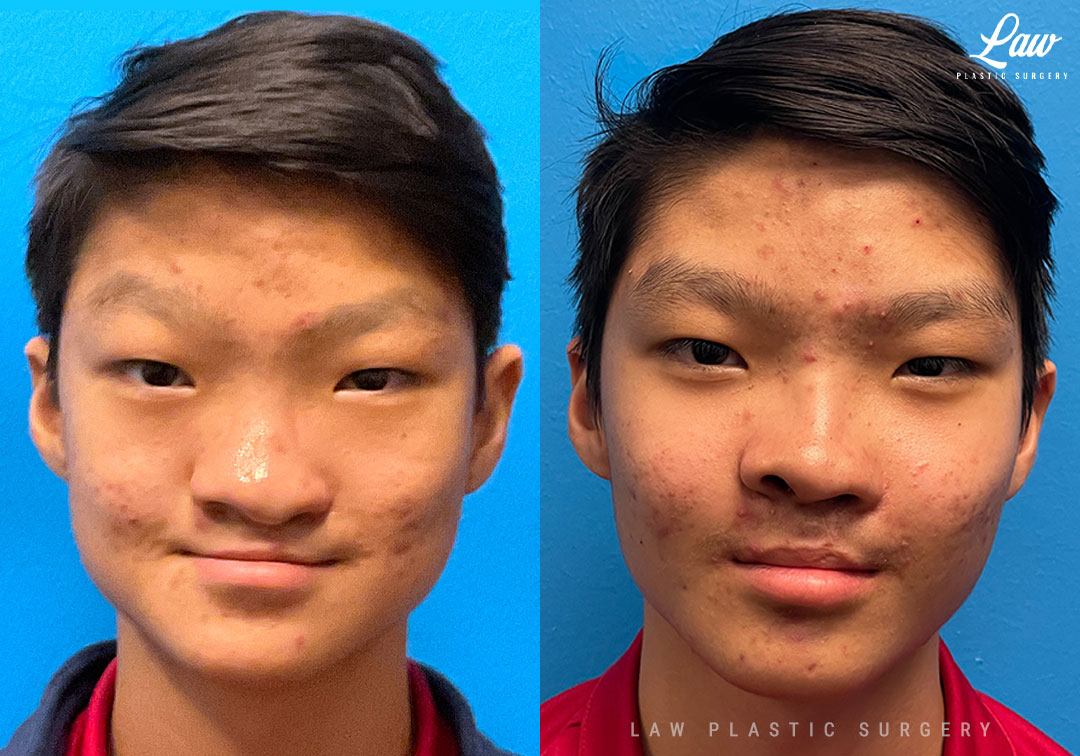
Asian Rhinoplasty Before and After Photo. Surgery performed in Dallas, TX at Law Plastic Surgery.
The timing and techniques used for our patients with clefts are tailored to each patient.
Here, the upper jaw required greater than 10mm of advancement to correct his occlusion.
Thus, we performed a Le Fort 1 internal distraction: the maxilla was mobilized, and hardware placed to gradually bring the bone and teeth forward 0.5mm at a time.
This incremental movement stretches the scar tissue, blood vessels, and nerves, giving them a chance to catch up a little bit every day and adapt. Otherwise, the advancement in a single surgery can be limited, and the maxilla is at risk of collapsing back.
Once the new bone solidifies, we return to retrieve the hardware and double-check stability of the new bone.
Here, he had continued difficulty breathing through his nose, and desired improved symmetry and contour.
Given his ongoing nasal obstruction — a closed septorhinoplasty was performed at the same time as the hardware removal.
MTF rib cartilage was used as a dorsal onlay graft, cantilevered with a septal extension graft. Tip grafts and diced cartilage helped provide some further tip definition and contour.
He is healing wonderfully at one month, with the swelling already much improved.
Asian Rhinoplasty Before & After Case 3

Cleft Rhinoplasty (Cleft Nose Surgery) Before & After Photo. Surgery performed in Dallas, TX at Law Plastic Surgery.

Cleft Rhinoplasty (Cleft Nose Surgery) Before & After Photo. Surgery performed in Dallas, TX at Law Plastic Surgery.
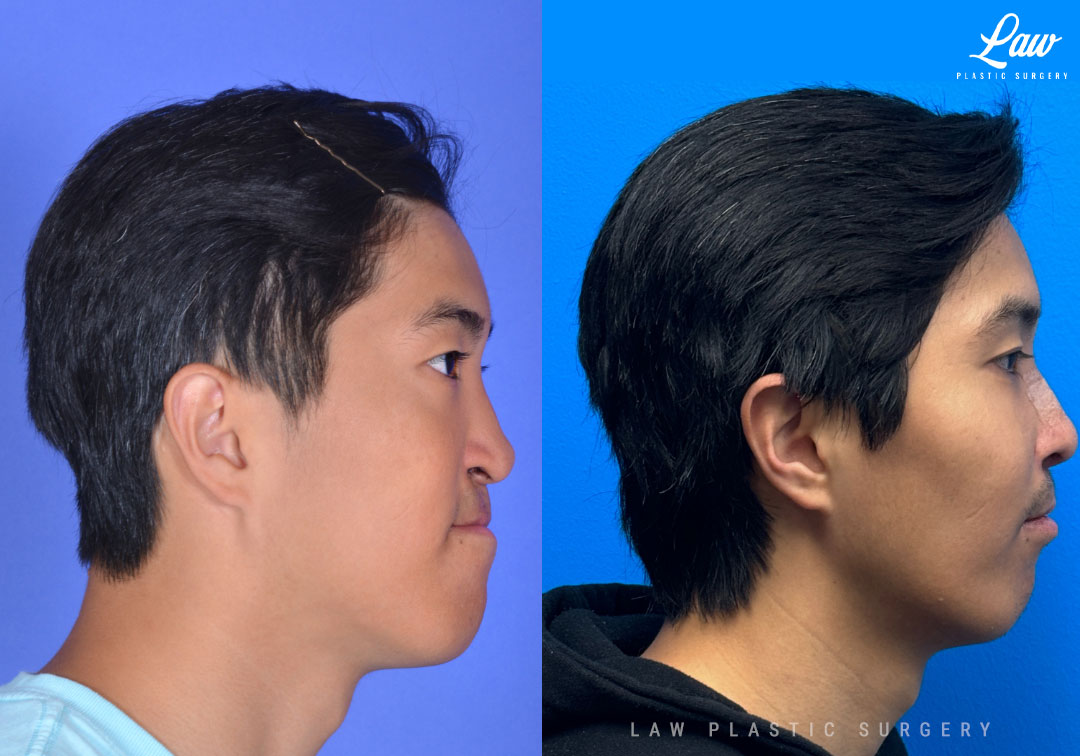
Asian Rhinoplasty Before & After Photo. Surgery performed in Dallas, TX at Law Plastic Surgery.
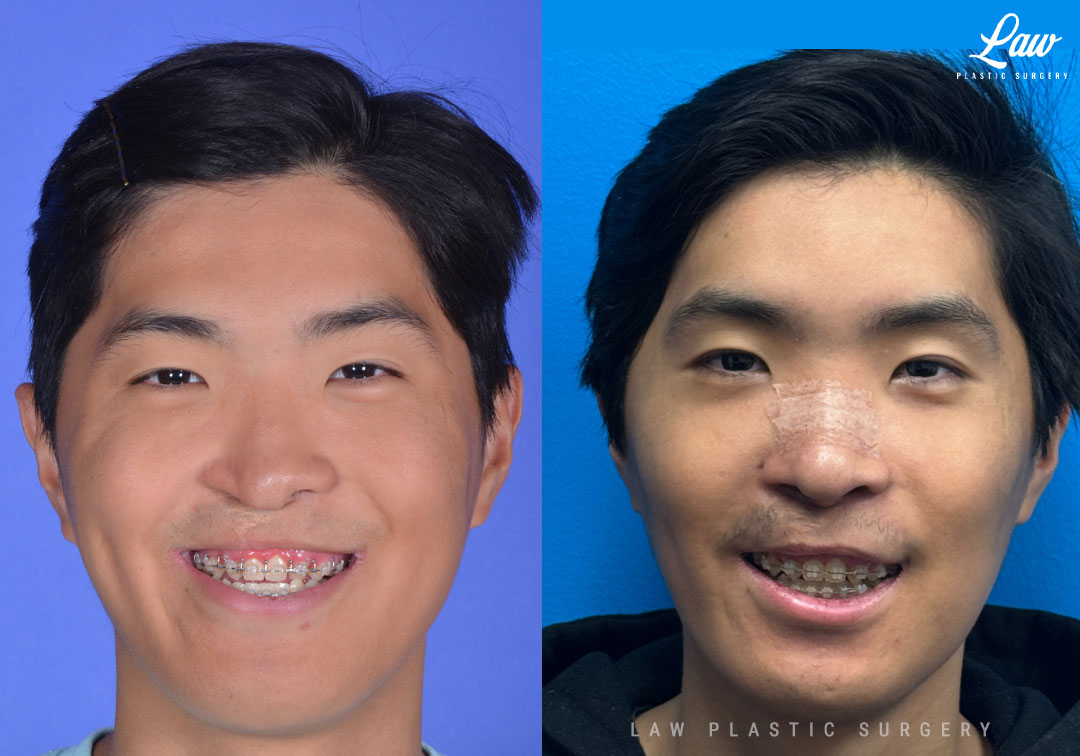
Asian Rhinoplasty Before & After Photo. Surgery performed in Dallas, TX at Law Plastic Surgery.
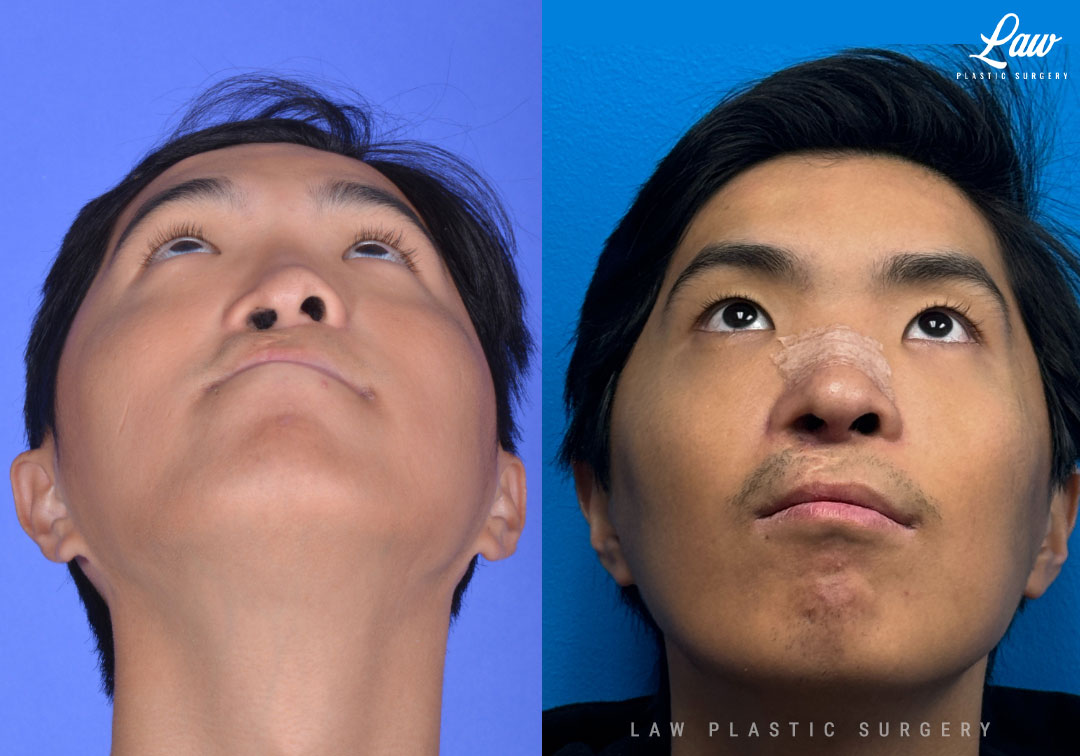
Asian Rhinoplasty Before & After Photo. Surgery performed in Dallas, TX at Law Plastic Surgery.
Early post-op results after a cleft rhinoplasty.
Bringing the alar base forward is especially challenging if not released and augmented at the time of the primary lip repair.
Volume can be added with a rib cartilage graft (self vs MTF), but the lining required release and some recruitment from the surrounding tissue.
The asymmetry in the lower lateral cartilages can be more pronounced in some patients. (Some authors say the two sides are the same size, but I don’t think so.)
Additional bulk here can be achieved with an additional alar batten graft on the cleft side.
Asian Rhinoplasty Before & After Case 4
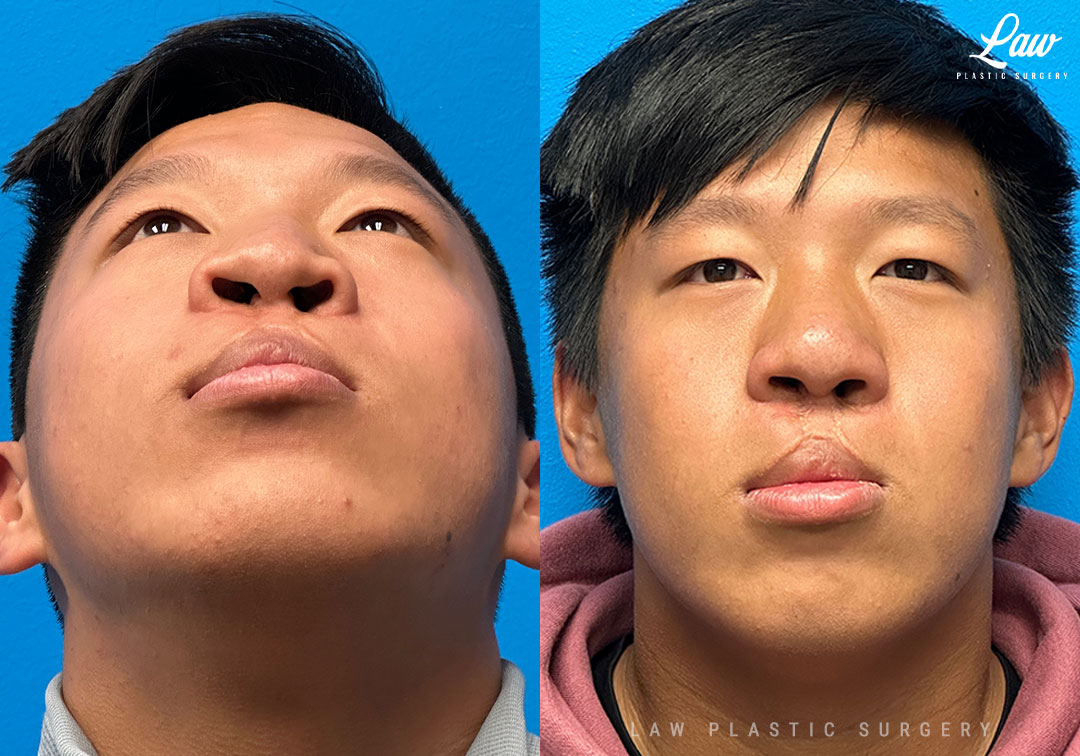
Asian Rhinoplasty Before & After Photo. Surgery performed in Dallas, TX at Law Plastic Surgery.
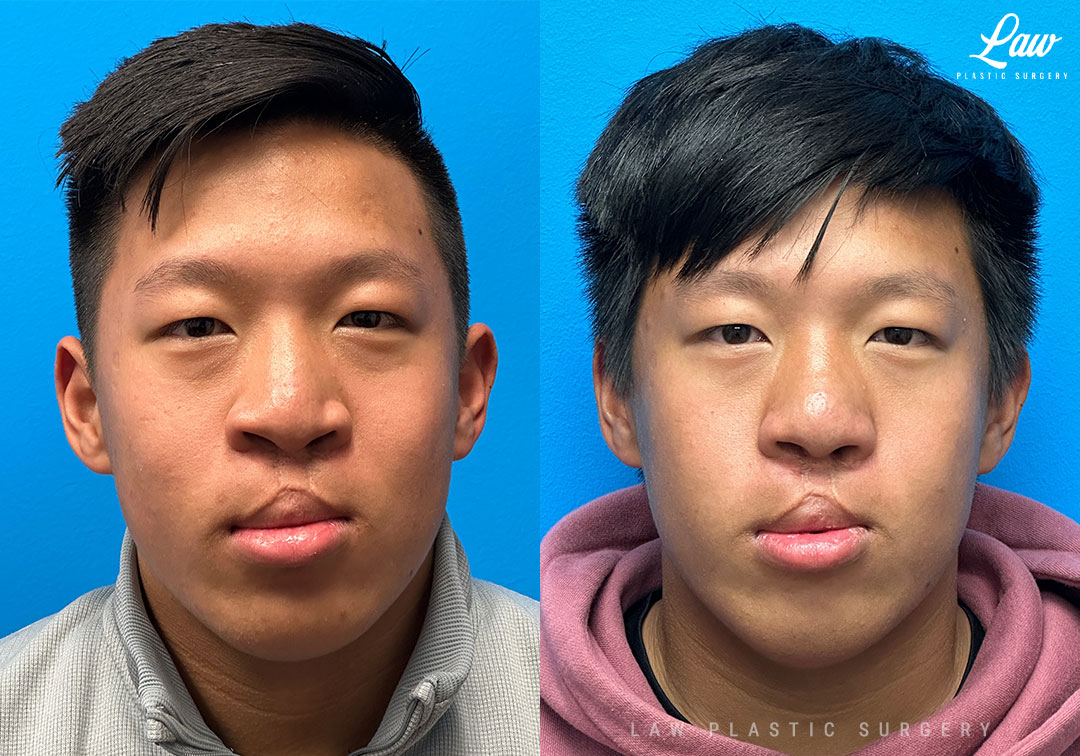
Asian Rhinoplasty Before & After Photo. Surgery performed in Dallas, TX at Law Plastic Surgery.
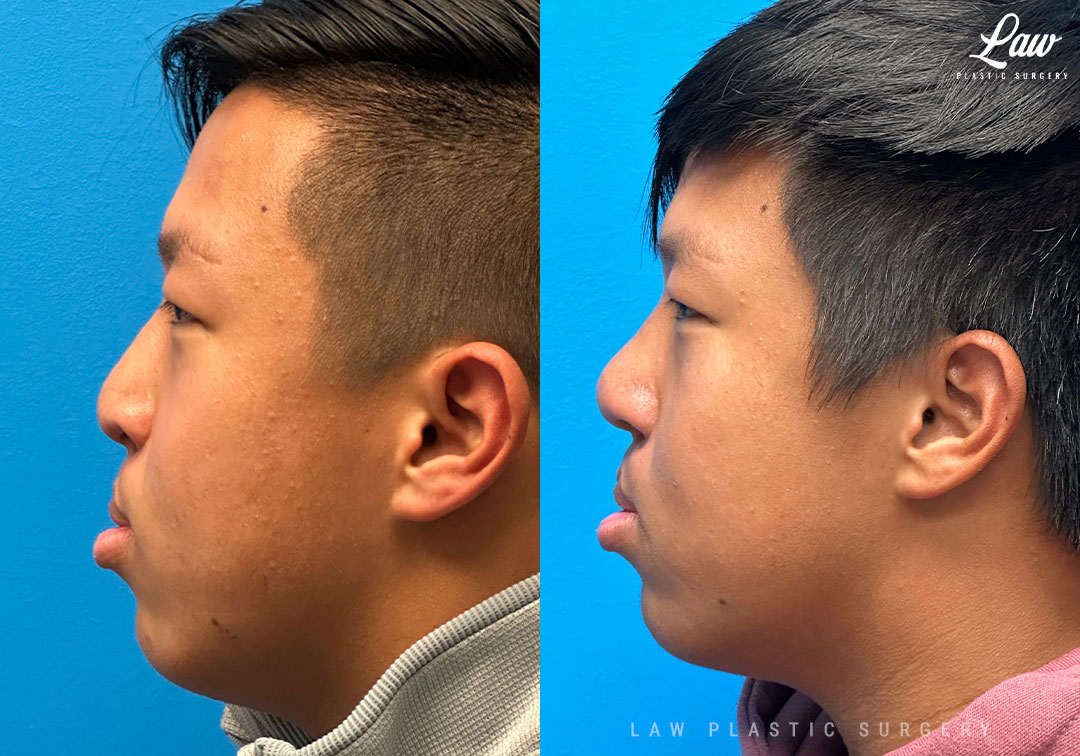
Asian Rhinoplasty Before & After Photo. Surgery performed in Dallas, TX at Law Plastic Surgery.
Rhinoplasty for patients with a history of a bilateral cleft can be challenging because of the tightness of the scar tissue.
That resistance can be compounded in people of Asian, Hispanic, and African-American descent (generally speaking) by:
– relatively weaker support of the nasal cartilage, and
– thicker skin and subcutaneous tissue.
To give enough support to increase projection and reshape the nostrils, rib cartilage (a patient’s own, or from a donor like from @MTFBiologics) provides a strong foundation.
Nasal septal cartilage can usually provide some useful grafts, too, and my partner Dr. Carlos Raul Barcelo often makes good use of ear cartilage when desired for a supported but more pliable nasal tip.
These results are relatively early at 3 months, with another 9-15 months for the swelling to completely go down.
Asian Rhinoplasty Before & After Case 5

Asian Rhinoplasty Before & After Photo. Surgery performed in Dallas, TX at Law Plastic Surgery.

Asian Rhinoplasty Before & After Photo. Surgery performed in Dallas, TX at Law Plastic Surgery.
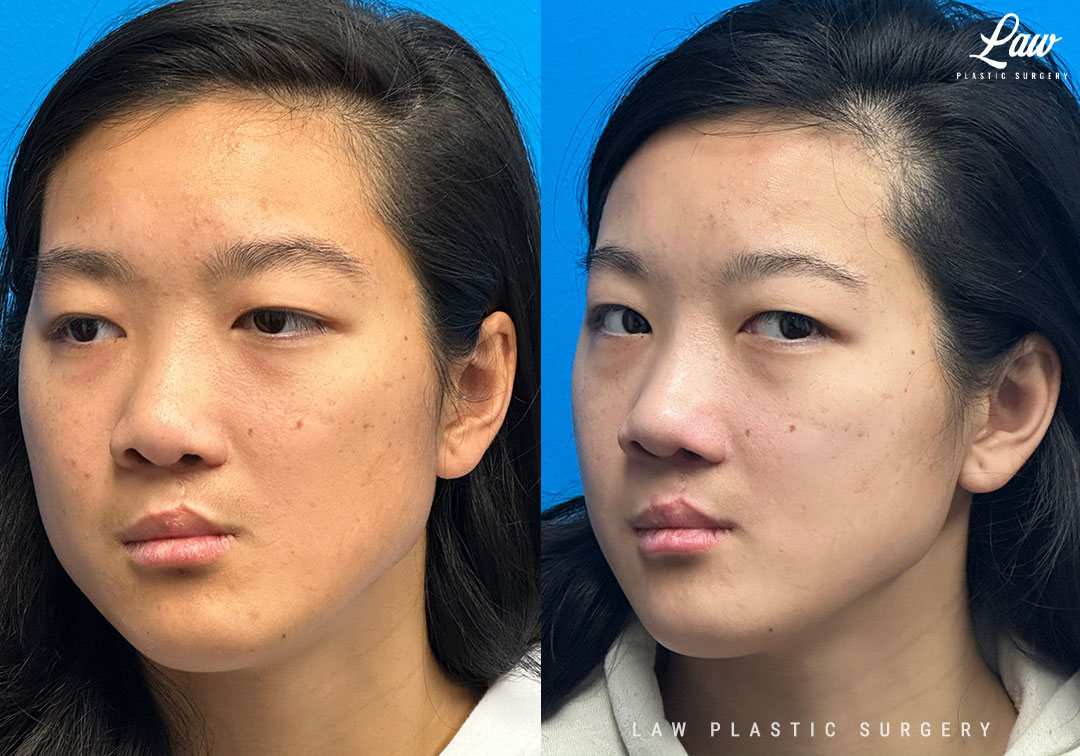
Asian Rhinoplasty Before & After Photo. Surgery performed in Dallas, TX at Law Plastic Surgery.

Asian Rhinoplasty Before & After Photo. Surgery performed in Dallas, TX at Law Plastic Surgery.
This patient had a previous cleft rhinoplasty with a very well-respected surgeon, but she still had significant problems breathing.
This is not uncommon, depending on the amount of relapse after the initial surgery.
On examination, her caudal septum had fallen back to the noncleft side. On the cleft side, the bony septum was intruding into the nasal passage, following the cleft palate.
I compare this to a ship turning sideways in a canal, creating obstruction on both sides.
Here, the primary goal of straightening the caudal septum and resecting bony obstruction was achieved, and she is excited to actually breathe through her nose better than she has her entire life.
She is seen at just 1 month, with quite a bit of swelling still to go down over the next 9-18 months.
Asian Rhinoplasty Before & After Case 6

Revision Rhinoplasty Before & After Photo. Surgery performed in Dallas, TX at Law Plastic Surgery.

Revision Rhinoplasty Before & After Photo. Surgery performed in Dallas, TX at Law Plastic Surgery.
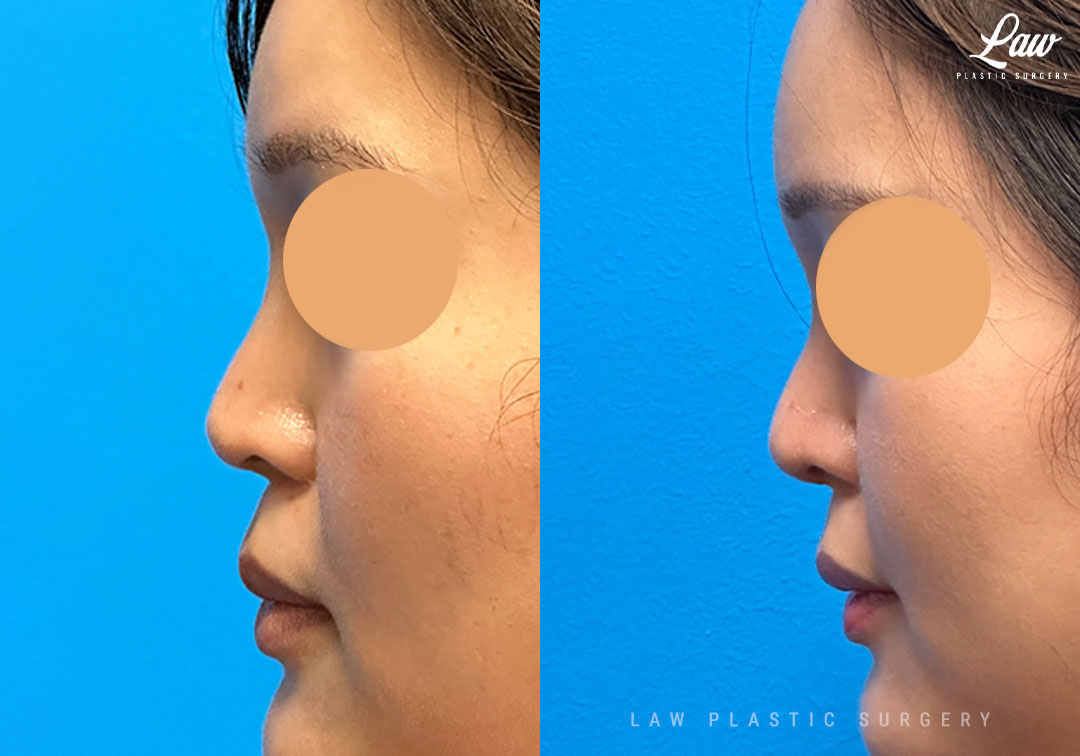
Revision Rhinoplasty Before & After Photo. Surgery performed in Dallas, TX at Law Plastic Surgery.
Nasal implants over time can cause problems with extrusion, infection, capsular contracture, pain, and displacement.
For this patient, the implant had been placed a decade prior in Asia, but it had gradually become more uncomfortable.
We discussed the risks and benefits of secondary reconstruction with cartilage grafts from her septum or rib (her own versus from a donor), but she opted to have the implant removed without any new grafts.
In this case, the dorsal graft was removed, but significant loss of dorsal projection was seen, with redundant and ptotic soft tissue. This internally, local soft tissue rearrangement and suture techniques of the upper lateral cartilages helped to refine her dorsum and aesthetic lines.
Tip suture techniques also helped strengthen and refine her tip.
